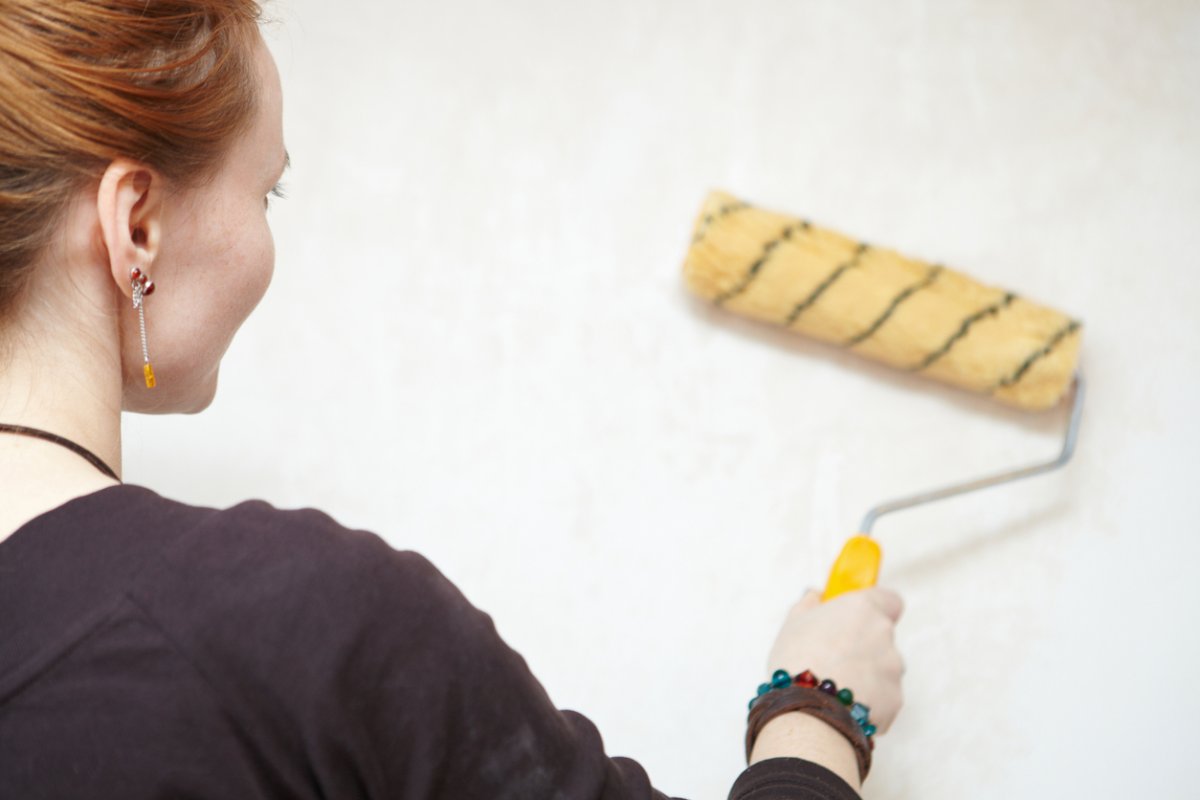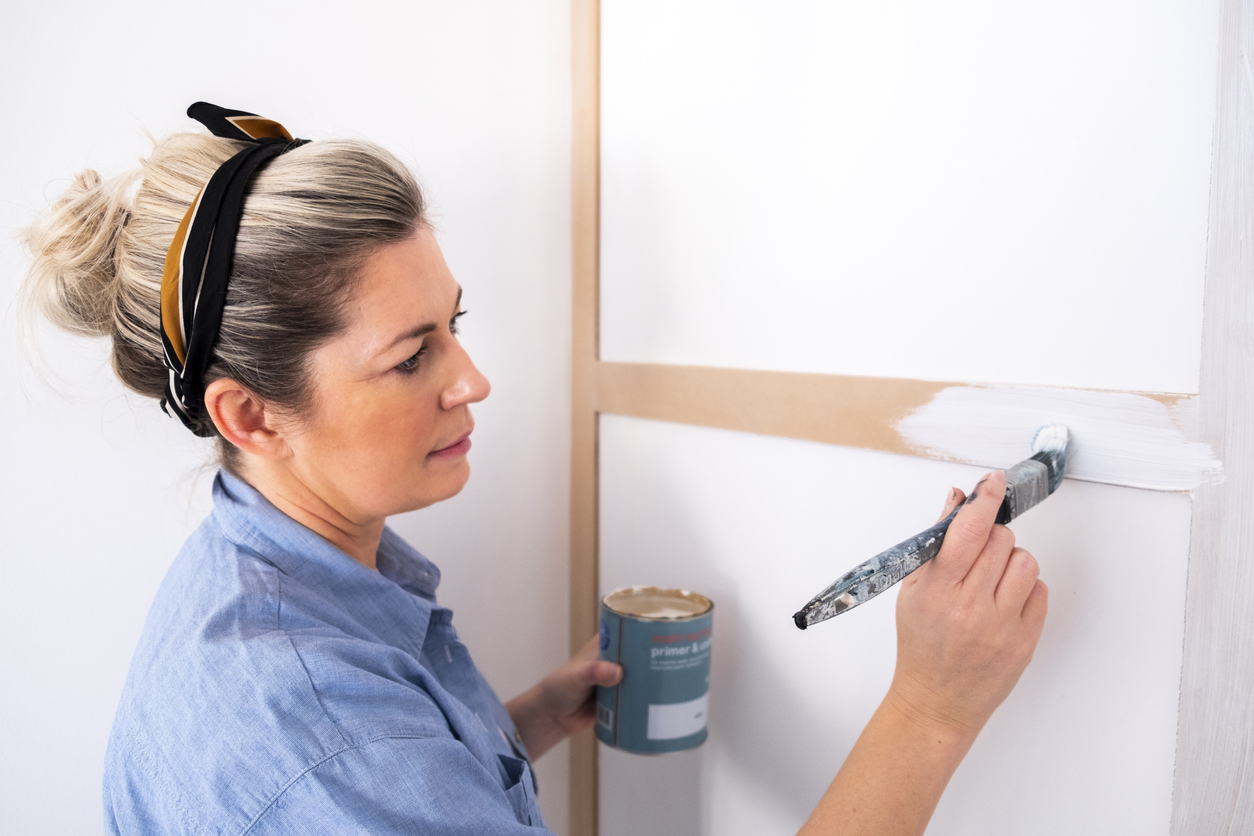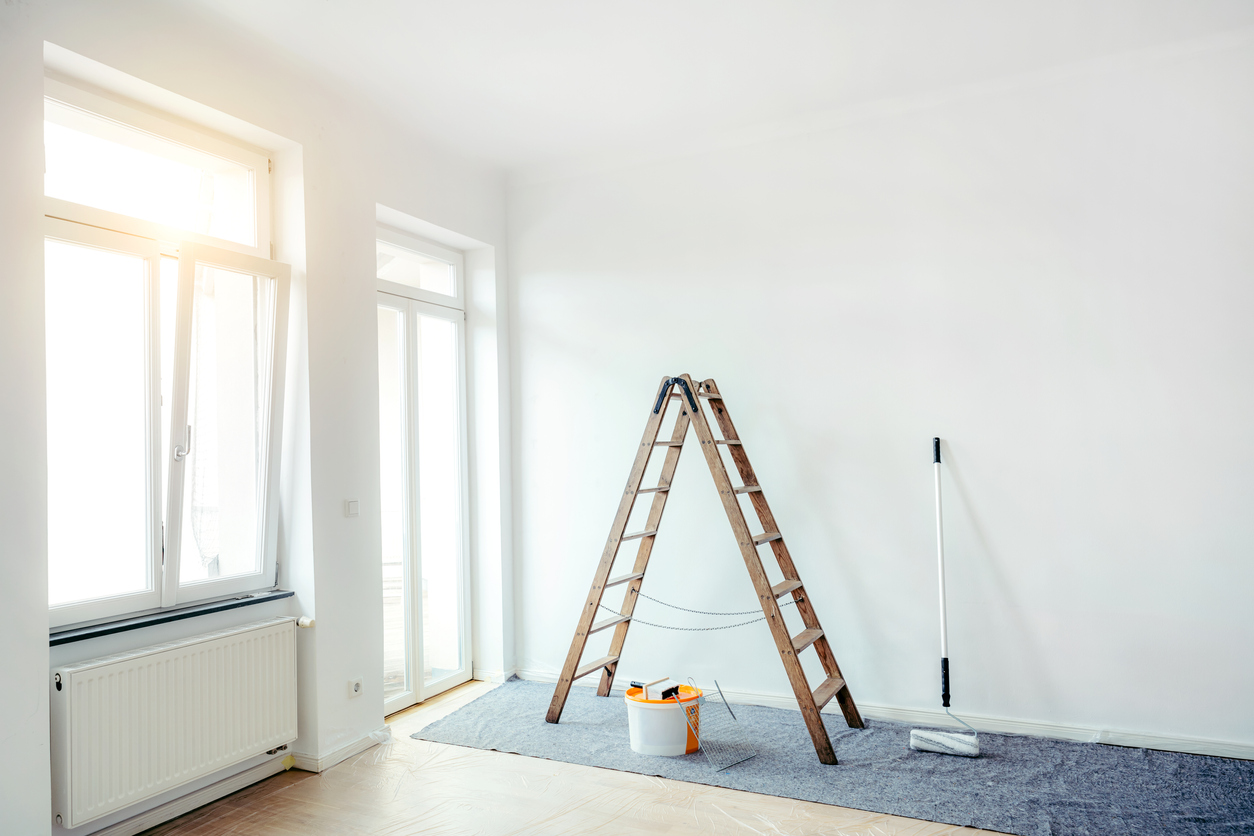

We may earn revenue from the products available on this page and participate in affiliate programs. Learn More ›
Q: I am planning to paint the living room and recently found out that it’s recommended to use a primer before painting. What is paint primer, is it really necessary, and how long does primer take to dry?
A: Paint primer is a substance used as a preparatory coat on previously unpainted surfaces, like wood, drywall, or metal. The primer seals the unpainted surface and helps to improve adhesion between the paint and the target surface.
While you can paint a wall without primer, there is a higher risk of peeling and chipping, especially in humid conditions. In most cases, a paint primer will take about an hour to dry, though it depends on the type of primer, the surface you’re priming, and more.
Learn more about the various factors that can influence primer drying time below, so you can properly prepare for your next painting project.
RELATED: How to Paint a Room in 9 Steps
How long it takes primer to dry largely depends on the type of primer being used.
Drying time isn’t as simple as stating an average number. There are a range of factors involved that can affect the drying time, including the type of primer being used. The most common types of primer include latex primer, oil-based primer, shellac primer, and self-priming paint.
- Latex primers are a good option for unfinished drywall. These primers are water-based substances that usually dry quickly, within about 30 to 60 minutes.
- Oil-based primers are made for sealing porous surfaces, providing protection against moisture, and are ideal for use on bare wood. However, these primers typically dry slower than other types of primer. Depending on the brand, oil-based primers can take about 30 minutes to 4 hours to dry.
- Shellac primers can be used to cover water or smoke stains and inhibit odors. These primers can be used on a variety of materials, including wood, metal, plaster, and plastic. Similar to latex primers, shellac primers dry in about 30 to 60 minutes.
- Self-priming paint combines paint and primer in one easy-to-use product. Instead of investing in separate primer and paint products, using this fast-drying primer can save time and money on a project. Still, it will take about 30 to 60 minutes for each coat to dry.
Two oil-based primers from two different brands might have different drying times.
In order to determine how long to let primer dry, it’s necessary to consider the brand you are using, especially when it comes to oil-based primers. Drying times for oil-based primers can vary significantly, with some primer products capable of drying in just 30 to 60 minutes, while others may take up to 4 hours.
Before investing in a paint primer for wood, metal, or any other surface, make sure to read the product label. The application instructions will include the primer dry time recommended by the manufacturer, so you know approximately how long you will need to wait between coats.

It also depends on what type of surface is being primed.
To find the answer to the question: how long does it take for primer to dry, it’s also necessary to consider the surface material. Common materials used with primer include wood, drywall, and metal.
- Wood surfaces can vary in moisture content and absorption quality, depending on the specific type of wood. In general, primer on a wood surface can take anywhere from 20 minutes to 3 hours to dry.
- Drywall surfaces typically dry faster than wood or metal. After applying the drywall primer, it should take less than an hour for it to dry. Here, again, there can be some variation in dry time based on the type and brand of primer.
- Metal surfaces take the longest to dry. Plan for up to 4 hours of drying time after applying the metal primer. Keep in mind that you may be able to apply a second coat of primer sooner than 4 hours, though this can vary among products.
RELATED: The 13 Painting Mistakes Almost Everyone Makes
Humidity, temperature, and other conditions further affect primer drying time.
When the humidity is too high, the primer will take longer to dry because there is a substantial amount of water vapor in the air. This is especially true for oil-based primers.
Hot temperatures can help primer dry quickly, but too much heat can cause the primer to dry in splotchy, uneven patches. However, if you try to use primer when it is too cold, it will take significantly longer to dry. Some latex primers may even freeze in cold weather. It’s best to apply primer when the ambient temperature is between 40 to 80 degrees Fahrenheit.
Ventilation is another factor to consider when planning a painting project. If you are working in an enclosed space, it can take much longer for the primer to dry and it can be dangerous. Open the windows and doors to the space, and set up a fan to improve air circulation. This will help the primer dry quickly and allow harmful vapors to exit the area.
Letting primer dry fully is essential for any quality, long-lasting paint job.
Primer is an important part of a painting project that improves adhesion and helps to seal the underlying material against moisture. If you decide against using a paint primer, there is a higher chance that the paint will chip or peel. After applying one or more coats of primer, the paint will have an easier time sticking to the target surface, leading to a higher quality finish than a wall painted without primer. However, it’s necessary to allow the primer to dry fully before moving on to painting.
If you attempt to paint over a primer coat that is not completely dry, it will result in a goopy, sticky mess that doesn’t adhere properly to the wall. Even if you can get the paint to stick, there is a good chance that it will peel, chip, or clump, leading to an unattractive finish. Instead, simply wait the suggested amount of time noted on the product instructions that are provided by the manufacturer.
RELATED: How Much Paint Do I Need?

How to Make Primer Dry Faster
If you are in a hurry and want to be able to finish each coat of primer quickly so you can proceed to painting, then there are a few ways to make a primer dry faster, including increasing the air circulation, reducing the humidity, and opting for a fast-drying primer or even a self-priming paint.
Method 1: Open windows and doors to increase the air circulation.
One of the easiest ways to decrease the primer drying time is to open up the room to allow for better air circulation. This can be accomplished by opening a window, opening a door, or setting up one or more fans. You can even use a hair dryer on low heat, but keep it at least 12 inches from the surface.
Method 2: Use a dehumidifier to reduce the ambient humidity.
Humidity can increase the drying time significantly. If you are working indoors, you may be able to reduce the humidity in the room with a dehumidifier. Additionally, primer coats will dry faster if they are thinner, so consider applying the primer in several thin coats, instead of slopping it on in one thick coat.
Method 3: Opt for a fast-drying primer or self-priming paint.
When the job needs to be finished as quickly as possible, invest in a fast-drying primer, like a latex primer, or even a self-priming paint to cut down on the drying time. Make sure to use the above methods with this fast-drying product to further decrease the time it takes for the primer to dry.
